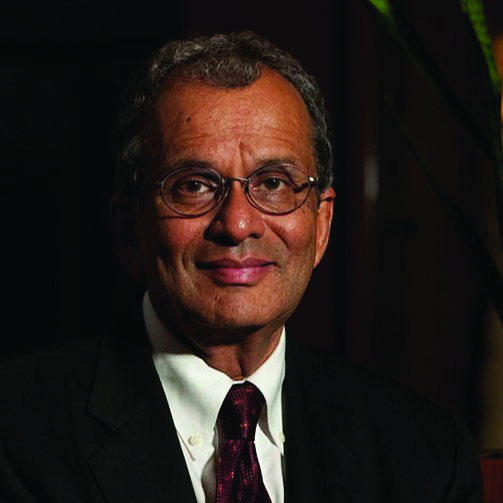
Sudhir Amembal,
Chairman & CEO,
Amembal & Halladay
Over two centuries ago, Americans began to move westward to make money on the other side of the Mississippi River. This movement was primarily opportunity-based; the western United States offered untapped resources, more land, more freedom and a chance to respond to and get ahead of the quickly changing economy.
In today’s market, Sudhir Amembal, chairman and CEO of Amembal & Halladay, advises financiers to consider traveling east or south to explore new opportunities that exist beyond our borders.
Why Go Global?
Currently, the U.S. market is flat. According to the World Leasing Yearbook, the U.S. market grew by 6% in 2022, whereas the equipment leasing market grew by 40% in India and 90% in Mexico. “The spectacular growth that we experienced in the U.S. decades ago is no longer there,” Amembal says.
The Global Landscape Then
More than 45 years ago, Sudhir Amembal began his journey across the equipment finance globe. His then newly-founded firm created the first commercial leasing course for lessors in 1978 after his desire to teach in an untapped area of the commercial market led him to the gap in knowledge of equipment leasing.
By the early 90s, Amembal & Associates was offering around 200 equipment leasing events each year. After 15 years of practice in the U.S., the market was quickly headed toward maturity. Amembal began searching, again, for untapped opportunities in markets that were still in the early stages of what he calls, in this context, the five phases to the leasing cycle — finance lease, creative finance lease, operating lease, new products and maturity. He found that many overseas markets were still in the early stages of this cycle.
It wasn’t easy for Amembal to begin teaching equipment finance overseas. He had plenty of knowledge already, but he had to learn about the legal, tax and regulatory nuances as well as the landscape in any country he wished to teach or consult in. Over a span of 20-plus years, Amembal accomplished this in a myriad of countries across the globe. The same concerns present themselves to companies that wish to begin overseas operations now.
“The opportunities were obvious; nobody was doing what we were doing in these markets,” Amembal says. Now, with equipment finance operations established in other countries and a few equipment finance companies already at play in the global market, there are more opportunities for U.S. companies to probe beyond their borders.
Global Opportunities Now
Equipment finance has few developed markets, including the U.S., Canada, the UK and large parts of Western Europe and Australia. These countries have penetration rates (the total annual volume of equipment finance divided by capital expenditure) of more than 20%, not including loan- like equivalence. Growing markets, with penetration rates close to 10%, include China and Mexico. Nascent markets with a very low penetration rates include large parts of Southeast Asia, Vietnam, Cambodia, India, and most of the countries in Africa.
Having researched, traveled and worked as an educator, consultant and board member of various companies in many of these markets himself, Amembal believes India, China and Mexico offer the most opportunity to U.S. companies. Southeast Asia, particularly Vietnam, also offers opportunities, but Vietnam is a small market. “Unless you want to be a regional player in the southeast Asian market where you have operations in six or seven countries, it may not be cost effective just to go to Vietnam,” Amembal says. “One needs to look at the larger markets, which are growing and have reasonable leasing infrastructure.”
Another important consideration for companies looking to the global landscape is how different the markets around the world are. There are four main differences to consider across the global landscape:
How Do You Go Global?
A few companies have already established global outreach. Two independents — CHG-Meridian and CSI Leasing — began initiatives in India. CHG-Meridian acquired an Indian equipment finance company in 2022, while CSI began a greenfield operation in India in 2020. “The opportunity really lies with the transfer of technology that the U.S. has vis-a-via through true leases,” Amembal says. “CSI and CHG-Meridian are now mostly offering true leases in India. That suggests the opportunity has 1) to do with growth and 2) with true leases.”
Going global isn’t for everyone. Companies must consider many variables before starting initiatives overseas. The penetration rate is a big factor and, as of now, the statistics for rates in the markets are reported with the volume of leasing, specifically. The U.S. has had a penetration rate of 22% for years, while countries such as China and Mexico have single-digit rates — as low as 2% in India.
Understanding infrastructure — the tax and the regulatory regimes that exist in other countries — is also imperative. The level of competition is another factor. If competition is incredibly high in one country, it may be difficult and unwise place to go to market.
A few industry companies already have global outreach. CHG-Meridian, for example, reaches 30 countries around the globe. Siemens and Meridian Leasing, global companies, also have a U.S. presence. “There’s very little cross border traffic coming this way. We have an industry with a lot of players, and it’s tougher to penetrate when the market is as mature as it is,” Amembal says. “But I strongly believe more and more players will begin to look beyond our borders to seize the opportunities, as has been evidenced in the last few years.”
No categories available
No tags available